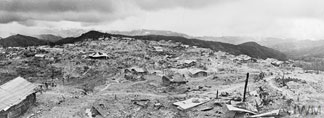The Second World War 1939–1945
Introduction
2022 - We are in the process of adding the War Diaries of the Battalions of the Second World War here »

(Click to enlarge) |
Just over 21 years after the end of the First World War – “the War to end all Wars” - Great Britain again declared War on 1st September 1939 following Germany's invasion of Poland.
Of the Regular Battalions: The 1st Battalion Queen's Royal (West Surrey) Regiment continued to serve in India at the start of the Second World War and fought for a year against tribesmen on the North-West Frontier. The Battalion then transferred to Burma and saw a great deal of hard fighting against the Japanese in the Arakan, at Kohima and in the Irrawaddy operations. After the Japanese surrender, the 1st Battalion spent a short period in Malaya, before returning home.
The 2nd Battalion moved to Egypt from Palestine in 1940 and fought in the Battle of Sidi Barrani and at Tobruk. It then moved back to Egypt and then Syria. This was followed by a peaceful year in Ceylon, prior to a move to Burma, where it served as part of the Deep Penetration Forces (Chindits) against the Japanese. After the War, the 2nd Battalion moved back to India, where it remained until 1947.
A month after War was declared The 1st Battalion The East Surrey Regiment moved to France and in May 1940 was in Brussels, withdrawing with BEF and evacuated at Dunkirk. 1940 and all 1941 was spent reforming before taking part in Operation Torch – North Africa landings in 1942, followed by invasion of Italy in 1943 where it remained until the German surrender in May 1945 when it moved to Austria.
The 2nd Battalion the East Surrey Regiment was stationed in Shanghai in 1939 moving to Singapore and Malaya in August 1940. In February 1941 it moved to Northern Malaya and following the attack on Pearl Harbour and Japanese invasion of Malaya saw heavy fighting during the withdrawal South. Such were the casualties it was amalgamated with the 1st Battalion The Leicester’s in December 1941 to form “The British Battalion”. It moved back to Singapore and on the surrender of the Island in February 1942 the majority became POWs. 149 died in captivity.
Prior to the declaration of War the Territorial Battalions were each ordered to split and form into two Battalions doubling the strength of the T A infantry.
The Queen's battalions formed into two brigades; 131 (Queen's) Brigade consisted of 1/5th, 1/6th and 1/7th Queen's and 169 (Queen's) Brigade was made up of 2/5th, 2/6th and 2/7th Queen's. All six Territorial battalions fought in France in 1940. Two years later, both brigades were ordered overseas and fought in the Eighth Army in the Western Desert. 131 Brigade became the Lorried Infantry brigade of 7 Armoured Division (the "Desert Rats") after the Battle of EI Alamein. 169 Brigade joined 56 London Division (the "Black Cats") and took part in the capture of Tunis in May 1943. Both brigades fought in the allied landing at Salerno, Italy in September 1943; one relieving the other. 131 Brigade then returned to England for the invasion of north-west Europe and eventually helped to push the Germans back across the River Maas. 1/5th Queen's ended the War in Hamburg, later moving to Berlin, where it took part in the Victory Parade in front of Winston Churchill. 169 Brigade remained in Italy until the end of the war.
The 1/6th and 2/6th TA Battalions of the East Surreys deployed to France at the beginning of the War. The 1/6th fought alongside the 1st Battalion in Belgium, before evacuation from Dunkirk. The 2/6th Battalion was forced to surrender at St Valery in 1940 together with 51st Highland Division, the majority of the soldiers became prisoners of war. The 1/6th continued to see active service, as it landed in North Africa in March 1943 and took part in the Tunisian Campaign. From February 1944 to May 1945, the Battalion fought in Italy, and it experienced hard fighting at Cassino and Forli. It then moved to Greece.
This section of the website contains histories written by officers who served in the various actions outlined above. All too frequently "Old Soldiers" do not tell of the experiences of battle. However, these histories do give a feel of what our Grandfathers and Great Grandparents experienced. Many were overseas for over 7 years. Listen to the stories of the Veterans under “Buried battles and Veterans Voices” on menu of website.
Throughout runs the theme of service, wholeheartedly given by men bound together by the spirit of comradeship based on the traditions of The Surrey Regiments. This section is dedicated to the 3,788 officers and men who never returned.
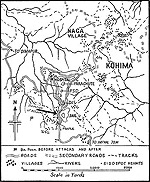 |
An Infantry Company in Arakan and Kohima The account of "B" Company of the 1st Bn. The Queen's Royal Regiment, who fought with the 7th Indian Infantry Division. Written in 1946 by Lt Col Mike Lowrey MC |
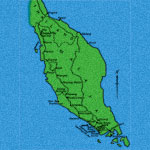 |
Malaya 1941-42 The account of the 2nd Battalion The East Surrey Regiment of the disastrous campaign in Malaya and Singapore in 1941 and 1942 together with accounts of POWs. See also the War diaries (below) of the Battalion covering March 1941 to the surrender of Singapore in February 1942. |
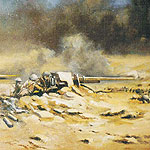 |
Queen's in the Middle East The story of 2rd Battalion The Queen’s Royal Regiment and 131 (Queen’s) and 169 (Queen’s) Brigades in the Middle East and North Africa during the first three years of the Second World War. |
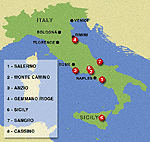 |
The Italian Campaign Actions of both 131 ( Queen’s Brigade) and 169 ( Queen’s Brigade) and 1st Battalion and 1/6th Battalion the East Surrey Regiment. Operations at Sicily, Salerno, Anzio and Cassino. |
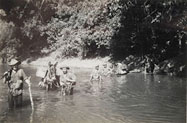 A Queen's Chindit Column |
The Queen's In Burma Both the 1st and 2nd Battalions of The Queen's splayed their part in defeating the Japanese. This story is written by men who were there forty years ago and is in addition to the Regimental History. |
 |
Algiers to Tunis This is the story of the 1st and 1/6th Battalions of The East Surrey Regiment in the North African Campaign of 1942-43. War DiariesOur Thanks to Allan Mornment (whose father served in The East Surrey Regiment) has transcribed the War Diaries of 1st Bn The East Surrey Regiment covering mobilisation in 1939, France and Belgium 1940 and Dunkirk, North Africa and Italy Campaigns. |
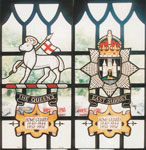 |
The Home Guard It was against this background that Sir Anthony Eden, Secretary of State for War, broadcast to the nation an appeal for volunteers to come forward to form a defence force, organised on local basis, to supplement the Regular Army in defence of the homeland, especially against the new German tactic of the use of paratroops. |
